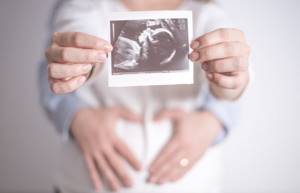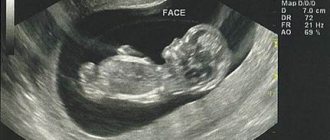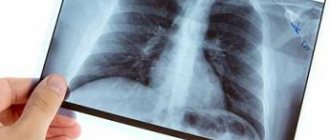Every day, when I do an ultrasound for pregnant women and not only, I am asked the same question: “How harmful is ultrasound?” The funny thing is that the presence of harm from ultrasound diagnostics is beyond doubt. And despite the fact that ultrasound diagnostics has existed since the sixties of the last century, not taking into account that no one has yet been able to prove the harm of ultrasound, citizens, patients and their sympathizers continue to talk about the dangers of ultrasound.
I will look at ultrasound from the perspectives of patients and professionals. If I'm missing something, write to me and I'll add it.
Physics of Ultrasound
To begin with, I propose to talk about what kind of beast “Ultrasound” is and how it differs from other sounds.
Ultrasound is vibrations from 20 kHz to 1000 MHz, inaudible to the human ear. Ultrasound diagnostics uses a narrower frequency range: from 1 to 25 MHz. Audible spectrum from 20 Hz to 20 kHz. If ultrasound were audible, it would sound 1000 times higher and thinner than the squeakiest mosquito.
The power of modern diagnostic ultrasound is from 15 to 730 mW/cm2. In obstetric studies, an average power of 180 mW/cm2 is used. For example, modern smartphones have a limited radiation power of 200 mW, Wi-Fi points of 100 mW, while the process of exchanging information between devices (maintaining communication) occurs on average 1000 times per second. At the same time, in an ultrasound diagnostic system, the sensor emits an average of 20 times per second, i.e. 80 percent of the time it is in receiver mode, emitting nothing.
Thus, irradiation of the measuring point with ultrasound power of 200 mW/cm2 is 50 times lower than 200 mW of a cell phone.
The average duration of an ultrasound examination is 20-30 minutes.
From the point of view of physics and biophysics, ultrasound has a number of mechanisms of action on body tissues.
Thermal mechanisms. Heating of tissues in the area of ultrasound exposure due to molecular relaxation, internal friction and relative movement of medium particles is negligible to cause a significant increase in tissue temperature.
If in the average output power mode the ultrasound device emits 250 mW/cm2, converting all the energy into heat, heating the fetal tissue, and there is no leakage of this heat, then in 300 seconds of radiation (and approximately the same amount of energy the sensor emits in 30 minutes of research) to heat the fetus and the uterus will be used (250 mW * 300 sec) 75 Joules, or 17.93 calories. This is enough to heat 17.92 ml of water by 1 degree. For example, let’s imagine a uterus with a fetus at 20 weeks as 3 liters of water. In this case, the radiation energy of the ultrasound device is enough to heat the uterus and fetus by less than 0.006 degrees. And this is under IDEAL conditions of an IDEAL model.
Cavitation (mechanical manifestation), which refers to the process of growth and oscillation of gas bubbles in the field of an acoustic wave, usually occurs in cases where high-power ultrasound is used in continuous radiation mode. Theoretically, cavitation can also occur when using diagnostic ultrasound. But only theoretically.
In modern medicine, the effects of cavitation are used in minimally invasive surgery. In this case, it is high-intensity focused ultrasound (HIFU), which uses much more powerful ultrasonic waves. Using HIFU, the following types of surgical treatment are performed:
- removal of uterine fibroids while preserving the uterine body;
- removal of a prostate tumor;
- treatment of heart diseases (atrial fibrillation);
- destruction of kidney and gallstones (shock wave lithotripsy);
- simulation of regenerative processes in nerve fibers;
- surgery for pathologies of the pelvic and abdominal organs.
The thin beam of ultrasound waves used in HIFU has much greater power than the waves used in ultrasound. But even with the use of such power, in order to bring intracellular structures to a boil (this is how the destructive effect on tumors is achieved), long-term continuous exposure to more than 20,000 W/cm2 (100,000 times stronger than diagnostic ultrasound) is required. For example, surgery to remove uterine fibroids lasts more than 3 hours.
TAUZI:
- The woman lies with her back on the couch and frees her entire stomach from outer clothing;
- The sonologist applies an ultrasound gel to the abdominal wall, which increases the mobility of the ultrasound sensor and improves the passage of waves through body tissue;
- An ultrasound sensor is applied to the body, after which the doctor begins to smoothly move it over the surface of the body, taking readings and logging them;
- During the examination, the patient may be asked to lie on her side, place her fists under her lumbar spine, or bend her knees;
- Upon completion of the procedure, the gel is removed from the abdomen with a towel or dry cloth.
Ultrasound is harmful because...
Most often they try to compare ultrasound with radio waves or electromagnetic radiation. This is similar to comparing red to square. The nature of these wave oscillations is fundamentally different, the effects are different, so comparisons of this kind are incorrect.
“The safety of ultrasound has not yet been proven, so it is better to avoid it.”
If the experience of using it for more than 50 years, the presence of not only children, but also grandchildren of those who were examined by ultrasound, the absence of any reliable evidence of the harm of diagnostic ultrasound on humans does not convince you, you should probably refuse ultrasound. According to WHO (“Safety of ultrasonography in pregnancy: WHO systematic review of the literature and meta-analysis.”), the only difference in children who received a dose of diagnostic ultrasound in utero was a slightly higher number of left-handed boys. That's all! It is also worth considering the presence of radiation from cell phones, radio stations, television antennas, GPS and Glonass satellites, all electrical appliances, main electrical wires, as well as the Earth’s magnetic field. I also advise you to pay attention to experiments conducted to study the influence of magnetic fields on the development of embryos. There it was shown that frogs and rats placed in a Faraday cage, excluding any electromagnetic influences, developed with pronounced malformations and mutations.
“Ultrasound doesn’t give a guarantee, what’s the point of doing it?”
Nothing in medicine is 100%. When determining the sex of the baby both at 11-12 weeks and at 30 weeks, I never give a guarantee. My favorite phrase “I won’t give 100% even after giving birth” is already known by a good half of Moscow.
However, if we do not consider casuistic cases and variants of clinical cretinism, the average “accuracy” of ultrasound examination is 85-90%.
K. Nicolaides indicates that when examining the size of the cervical fold in a study for Down syndrome, the sensitivity is 33.5% and the specificity is 99.4%. The likelihood ratio is 55.8%, which is not high, but when combined with other signs and symptoms, it is a very accurate result. For some this is too little. For others, it's better than complete ignorance. The final decision rests with the pregnant woman, no doubt.
“Although it is stated that a person does not perceive high-frequency sounds, the violent reaction of the fetus to ultrasound remains unexplained (it is not observed in all women, by the way). When the sensor moves across the mother’s belly, some babies begin to move intensely.”
Firstly, it is worth mentioning that there is no objective evidence that during an ultrasound the child moves more actively than at any other time in life. Agree, everything here is quite subjective: some mothers’ babies violently kick their father’s hand, others calm down when their father’s hand touches their stomach; Some people are sleeping during CTG, others are going on a rampage. It's the same with ultrasound. Only during the ultrasound does the woman also lie on her back and focus on the baby’s behavior, which in itself is important.
What processes affect a woman undergoing an ultrasound? The ultrasound itself, the force of pressure on the stomach, everything? No, there is also emotional pressure on the pregnant woman, which is accompanied by the release of a corresponding portion of hormones. Most likely, the baby reacts to them.
My patients know how important emotional support is. I try to have a positive attitude towards my patients, reassure them and destroy established harmful misconceptions. You can read their reviews, there are many of them on the Internet. If the mother is calm, then the child will be calm.
When the baby turns away and covers his face, this is not his attempt to hide from the ultrasound, but reflexive movements during periods of wakefulness. The child is in a relaxed state in the aquatic environment. Flexor muscles are stronger than extensors, so the natural position is one in which the arms are bent at the elbows and pressed either to the chest or to the face.
“Ultrasound, which was considered harmless, can damage the genetic apparatus. Moscow researchers came to this disappointing conclusion under the leadership of Petr Petrovich Garyaev, a senior researcher at the Department of Theoretical Problems of the Russian Academy of Sciences.”
This opinion is based on the work of P.P. Garyaev’s “Wave Genome”, in which the author claims that the frequency of ultrasonic vibrations causes delayed genetic deviations, in other words, mutations. But due to the complete lack of evidence, the scientific community did not accept Garyaev’s work. Later, the presence of scientific degrees in P.P. Garyaev, was also declared invalid.
I can even admit that there is a bit of common sense in the theory expressed, but the author himself has discredited himself so much with lies that it makes no sense to analyze his theory.
“It’s better not to do an ultrasound, they will definitely find something there. The less you know the better you sleep."
Every person has the right to receive information and to refuse it. If a person refuses the opportunity to find out in advance about possible problems with the child’s health (developmental defects that require correction immediately after birth), to see the shortening of the cervix and save the pregnancy, this is his right.
“Okay, ultrasound is harmless, but Doppler is definitely harmful to your health.”
There are no fundamental differences in the effect on tissue. Yes, during Doppler examination, ultrasound beams are focused at one point. However, even with this, the tissue exposure remains much less than the minimum fixed dose.
Diagnosable disorders
Thanks to this examination, it became possible to identify groups of pregnant women who have an increased likelihood of having children with various chromosomal abnormalities.
An ultrasound can detect the following disorders and malformations:
- Down, Patau, Edwards, Smith-Lemli-Opitz, Corneli de Lange, Shereshevsky-Turner syndromes
- cystic hygroma (tumor formation in the neck);
- triploidy (cells have three chromosomes instead of two);
- defectiveness of the anterior abdominal wall , prolapse of internal organs and intestinal loops;
- asymmetry of the cerebral hemispheres;
- irregular shape of the vascular plexus in the fetus;
- violation of the integrity of the skull bones;
- diaphragmatic hernia of the stomach.
Science has NOT proven that...
1. Ultrasound is generally unpleasant for the fetus. How to check whether he is pleased or not remains a question.
2. Ultrasound leads to fetal growth retardation. Typically, ultrasound is performed more often when fetal growth is restricted in order to monitor weight gain. And it turns out like in a joke: all dead people ate cucumbers, which means cucumbers lead to death.
3. Ultrasound leads to the development of brain cysts. Fetal brain cysts form during and during growth and usually go away on their own. Ultrasound does not affect their growth and development in any way.
4. Ultrasound leads to the formation of moles in a child. Apparently, adherents of this theory believe that moles appeared in humans along with ultrasound... Apparently, before the advent of ultrasound, no one had moles.
Key principles for the safe use of ultrasound
1. Ultrasound examination should be used only for the purpose of establishing a medical diagnosis.
2. Ultrasonic equipment should only be used by personnel who are fully familiar with its safe and proper use.
This requires:
- understanding the possible thermal and mechanical biological effects of ultrasound;
- full awareness of equipment settings and understanding of their impact on the ultrasound output power level.
3. The examination time should be as short as necessary to establish a diagnosis.
4. Ultrasound output power should be kept as low as possible to obtain useful diagnostic information.
5. Ultrasound scanning during pregnancy should not be performed when the purpose is only a “souvenir” video or photograph.

Parameters studied in the fetus
Ultrasound examines individual organs and parameters of the fetus:
- belly size;
- size of the heart and outgoing vessels;
- the bones of the thigh , forearm, lower leg, shoulder, and long tubular bones are measured;
- coccygeal-parietal size and length of the fetus;
- head (circumference, length from occiput to forehead, biparietal diameter).
The doctor finds out where the stomach and heart are located. Determines a number of brain structures that should be present at a given stage of pregnancy.
Summary
Whether to do an ultrasound or not, how many times and in what place, is up to you to decide. If you register with the antenatal clinic, by order 572n you will have an ultrasound scan 3 times (one in each trimester). Sometimes another ultrasound is done at the very early stages to rule out ectopic pregnancy.
In accordance with the ALARA principles, the priorities are safety, high accuracy, clarity, reproducibility and simplicity of ultrasound examination. The mood, emotional coloring, and formulation of explanations for what is seen depend entirely on the doctor’s competence and his understanding of the patient’s needs.
Be healthy!
Author: Vladimir Sursyakov, obstetrician-gynecologist, ultrasound diagnostics doctor, candidate of medical sciences, deputy chief physician of the Remedy clinic of the Institute of Reproductive Medicine. www.sursyakov.ru | @dr_obgyn
Addition from Tatyana Rumyantseva:
In many countries there is no such free access to ultrasound during pregnancy as in Russia. Therefore, all data on the safety of ultrasound during pregnancy refer to 2-4 studies per pregnancy, and not to 20-30. And although there are very few theoretical prerequisites for the existence of real harm, it has not yet been scientifically proven that 20 ultrasounds per pregnancy are completely harmless.
Sources:
International Ultrasound Safety Guidelines
The world's leading organization for the safety of ultrasound diagnostics, to which all instructions for modern ultrasound devices refer, is the American Institute of Ultrasound in Medicine (AIUM - American Institute of Ultrasound in Medicine).
The main regulatory document is the Medical Ultrasound Safety guide (Safety of Medical Ultrasound, 2nd edition, 2009, 63 pp.). This document is a baseline document and is based on the ultrasound safety recommendations of the other responsible organizations listed below.
European countries have their own regulatory documents that determine the safe use of ultrasound diagnostics.
The practical work of Russian doctors includes Hygienic requirements for the working conditions of medical workers performing ultrasound examinations. Guide R 2.2.4/2.2.9.2266-07. Safety requirements for ultrasonic scanners are regulated by GOST 2683-86 and the International Electrotechnical Commission (IEC) Standards of 1988. These requirements are taken into account when certifying scanners. An important recommendation for the safe use of diagnostic ultrasound is the ALARA (As Low As Reasonably Achievable) rule - as little as it is reasonable to use.
- The main regulatory document is the Medical Ultrasound Safety guide (Safety of Medical Ultrasound, 2nd edition, 2009, 63 pp.).
- European Committee of Medical Ultrasound Safety (ECMUS – European Committee for the Safety of Medical Ultrasound).
- Statement on Use of Diagnostic Ultrasound for Producing Souvenir Images or Recordings in Pregnancy (2011).
- Clinical Safety Statement for Diagnostic Ultrasound (2011).
- The British Medical Ultrasound Society (BMUS - British Medical Ultrasound Society).
- Guidelines for safe use of diagnostic ultrasound equipment (Guidelines for the safe use of diagnostic ultrasound equipment, 2009).
- National Council on Radiation Protection and Measurements (NCRP - National Council on Radiation Protection and Measurements, USA).
- Exposure Criteria for Medical Diagnostic Ultrasound
- Hygienic requirements for working conditions of medical workers performing ultrasound examinations. Manual R 2.2.4/2.2.9.2266-07.
- Safety of ultrasonography in pregnancy: WHO systematic review of the literature and meta-analysis. Torloni MR1, Vedmedovska N, Merialdi M, Betrán AP, Allen T, González R, Platt LD; ISUOG-WHO Fetal Growth Study Group. Ultrasound Obstet Gynecol. 2009 May;33(5):599-608. doi: 10.1002/uog.6328.
Similar
TVUSI:
- The woman removes clothing from the lower part of her body, sits on the couch and assumes the position for a standard gynecological examination;
- A condom will be placed on a special ultrasound sensor, then it will be lubricated with sound-conducting gel;
- The doctor inserts an ultrasound probe into the vagina and begins scanning, at the same time taking readings from the screen and recording it in the study protocol.
Using TVUS, you can determine the presence of pregnancy even with a five-day delay in menstruation (if the pregnancy lasts more than 2 weeks).
This examination method is preferable in the first trimester.
How to decipher an ultrasound result
Assessment of fetal vital activity includes only two main indicators: the ability to move and heartbeat. Ultrasound allows the specialist to observe the fetal heartbeat from the 6th week of pregnancy. The presence of contractions with good rhythm is considered the norm.
For each stage of pregnancy, the following frequencies of contractions per minute are considered normal:
- 6-8 weeks – 130-140;
- 9-10 weeks – 190;
- remaining time until birth – 140-160.
Heart rate measurement is mandatory. Based on this indicator, the doctor can determine the presence of problems in bearing a child. If it is underestimated or exceeded, the woman will be included in the risk group.
At 7-9 weeks, active mobility of the embryo should be noticeable. At first, the fetus moves its whole body chaotically; over time, flexion and extension movements can be seen (due to the fact that the fetus is often in a state of rest, the indicator of motor activity does not have much weight in assessing its viability).
The parameters of the embryo and ovum, as well as the progression of their growth, are determined by the following indicators:
- The diameter of the fetal egg (at the moment when the diameter is 14 mm, and the doctor is not able to detect an embryo on an ultrasound, it is considered that this pregnancy has stopped developing);
- Coccygeal-parietal size (length of the fetal body from the coccyx to the crown). This indicator is measured first, and thanks to it you can find out the age of the fetus with an error of up to 3 days.







